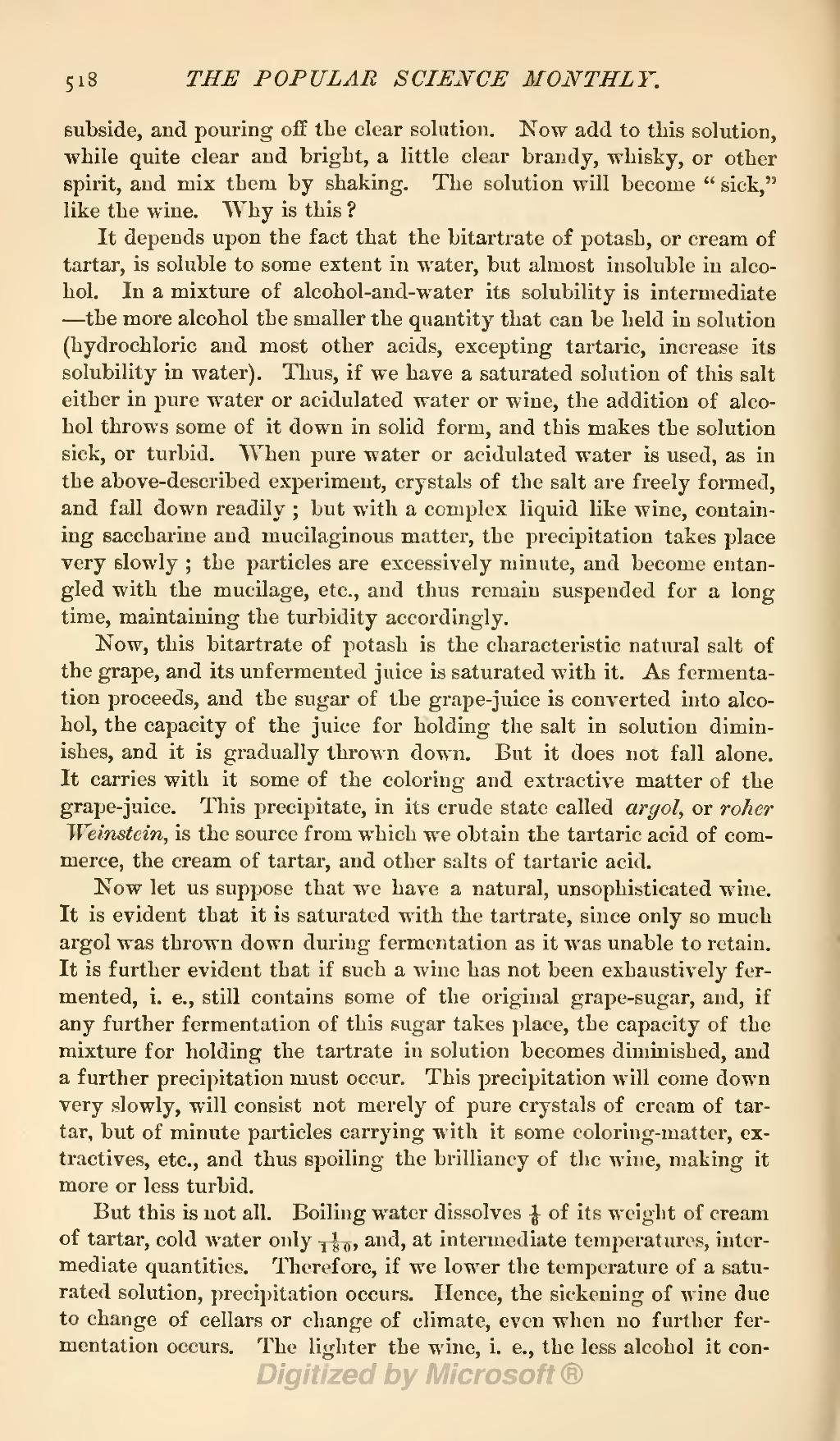subside, and pouring off the clear solution, Now add to this solution, while quite clear and bright, a little clear brandy, whisky, or other spirit, and mix them by shaking. The solution will become "sick," like the wine. Why is this?
It depends upon the fact that the bitartrate of potash, or cream of tartar, is soluble to some extent in water, but almost insoluble in alcohol. In a mixture of alcohol-and-water its solubility is intermediate—the more alcohol the smaller the quantity that can be held in solution (hydrochloric and most other acids, excepting tartaric, increase its solubility in water). Thus, if we have a saturated solution of this salt either in pure water or acidulated water or wine, the addition of alcohol throws some of it down in solid form, and this makes the solution sick, or turbid. When pure water or acidulated water is used, as in the above-described experiment, crystals of the salt are freely formed, and fall down readily; but with a complex liquid like wine, containing saccharine and mucilaginous matter, the precipitation takes place very slowly; the particles are excessively minute, and become entangled with the mucilage, etc., and thus remain suspended for a long time, maintaining the turbidity accordingly.
Now, this bitartrate of potash is the characteristic natural salt of the grape, and its unfermented juice is saturated with it. As fermentation proceeds, and the sugar of the grape-juice is converted into alcohol, the capacity of the juice for holding the salt in solution diminishes, and it is gradually thrown down. But it does not fall alone. It carries with it some of the coloring and extractive matter of the grape-juice. This precipitate, in its crude state called argol, or roher Weinstein, is the source from which we obtain the tartaric acid of commerce, the cream of tartar, and other salts of tartaric acid.
Now let us suppose that we have a natural, unsophisticated wine. It is evident that it is saturated with the tartrate, since only so much argol was thrown down during fermentation as it was unable to retain. It is further evident that if such a wine has not been exhaustively fermented, i. e., still contains some of the original grape-sugar, and, if any further fermentation of this sugar takes place, the capacity of the mixture for holding the tartrate in solution becomes diminished, and a further precipitation must occur. This precipitation will come down very slowly, will consist not merely of pure crystals of cream of tartar, but of minute particles carrying with it some coloring-matter, extractives, etc., and thus spoiling the brilliancy of the wine, making it more or less turbid.
But this is not all. Boiling water dissolves 1/6 of its weight of cream of tartar, cold water only 1/180 and, at intermediate temperatures, intermediate quantities. Therefore, if we lower the temperature of a saturated solution, precipitation occurs. Hence, the sickening of wine due to change of cellars or change of climate, even when no further fermentation occurs. The lighter the wine, i. e., the less alcohol it con-

